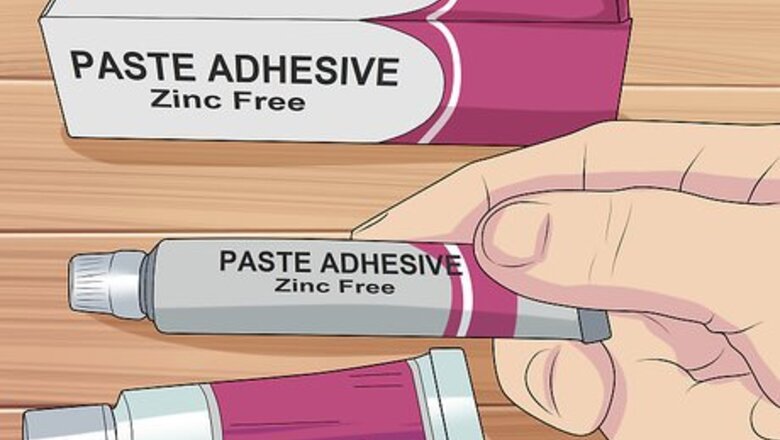
views
X
Trustworthy Source
US Food and Drug Administration
U.S. government agency responsible for promoting public health
Go to source
Studies show that using a denture adhesive makes it easier to chew and talk without worrying about your dentures moving or coming out, so you may prefer to use it even if your dentures fit well.[2]
X
Trustworthy Source
PubMed Central
Journal archive from the U.S. National Institutes of Health
Go to source
Denture adhesive usually comes in two forms: a paste and a powder. Although using an adhesive can be super helpful if your dentures feel loose, it's not a solution for ill-fitting dentures, so see your prosthodontist if you have fit problems.
Using a Paste Adhesive
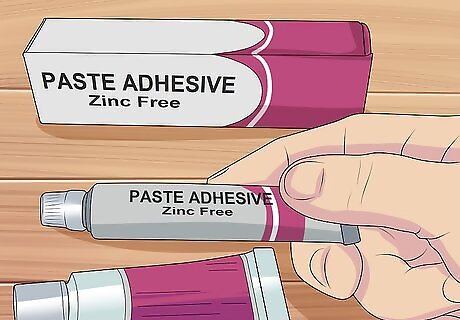
Choose a paste adhesive that is zinc-free. Zinc is often overused in denture adhesives, so much so that zinc-free paste adhesive is now available. Using a paste adhesive that contains zinc combined with a diet high in zinc can lead to excessive zinc in your body and possible health issues. If you use a paste adhesive that contains zinc, only use it as directed on the label and do not use too much adhesive.
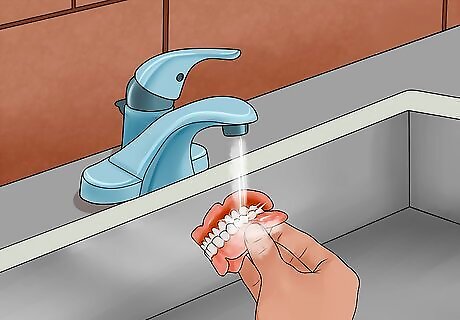
Clean and dry your dentures. Before you apply adhesive, you need to clean your dentures under running water and your normal denture cleanser. Then, pat them dry. Dry dentures will help the paste adhesive to stay attached to the dentures, and to your gums. This will ensure a very stable bite and will prevent food from getting underneath your dentures.
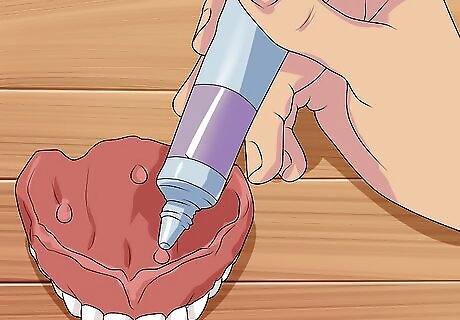
Start by applying denture cream to your upper denture. Do not use more denture adhesive than directed on the label. Always begin with a small amount of adhesive so you don’t put too much on your dentures. Apply three to four dabs of the paste the size of a pencil eraser to the upper denture, equally distributing the paste on the inside surface. Do not apply the paste too close to the edge of your denture.
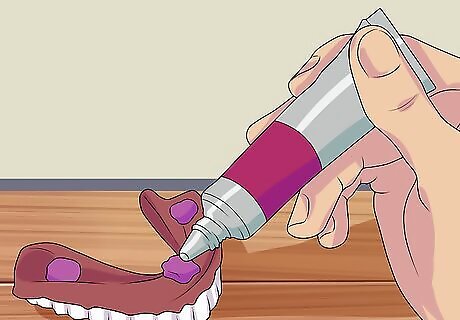
Place three to four dabs on your lower denture. The dabs should be no bigger than a pencil eraser and should not be too close to the edge of your denture. Again, make sure the dabs are evenly spaced along the inside surface of the denture.
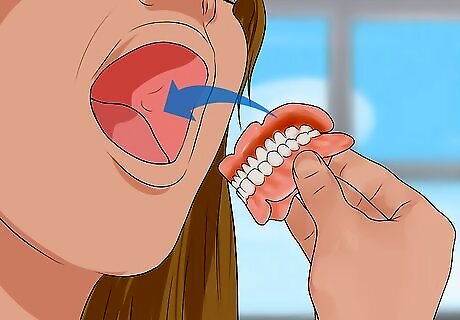
Put the dentures in your mouth and press them together firmly to keep them in place. If any of the adhesive oozes out on the sides of the dentures, you have used too much adhesive. You may need to remove the dentures, clean off the adhesive and reapply, using less on the upper and lower dentures.
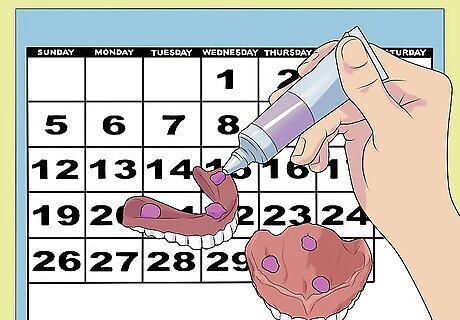
Use only one application a day. If you put the adhesive on your dentures properly, you should not need to reapply the adhesive throughout the day. A standard 40 g tube of adhesive should last at least four weeks, a 47 g tube should last five weeks, and a 70 g tube should last at least eight weeks. Avoid overusing the denture adhesive or using too much every day.
Using a Powder Adhesive
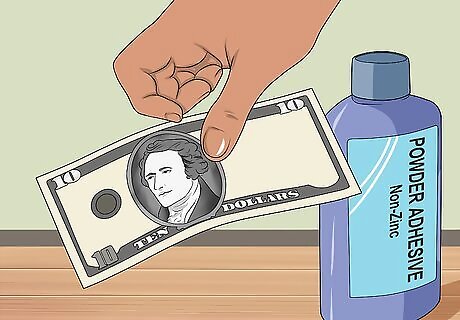
Try to buy a powder adhesive that does not contain zinc. Zinc is often overused in denture adhesives. If you have a diet that is high in zinc and/or take vitamins containing zinc, and also use a denture powder containing the mineral, you can experience serious health problems, including nerve damage. Look for powders that are specifically marked asa being zinc-free. If you use a powder adhesive that contains zinc, only use it as directed on the label and do not use too much adhesive. Your prosthodontist may also be able to recommend a powder denture adhesive that does not contain zinc.
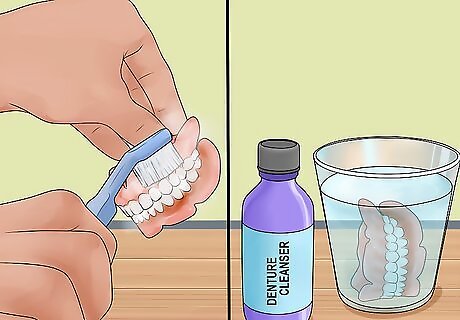
Clean your dentures. Use your usual denture cleanser to give your dentures a good clean before you apply the adhesive. Keep your dentures moist and do not dry them off. The moisture will help the powder adhesive stick to your dentures.
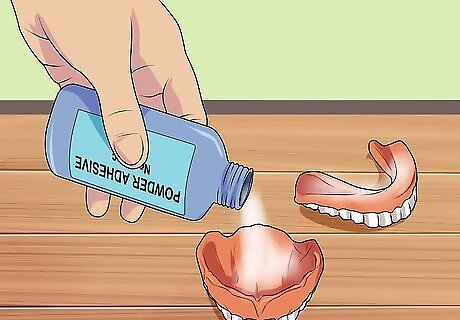
Sprinkle the powder evenly onto the surface of either denture. The key is to distribute the powder in an even layer over your dentures. Shake or vibrate the dentures in your hand to ensure the powder gets on both dentures. Think of this as similar to flouring a cake pan.
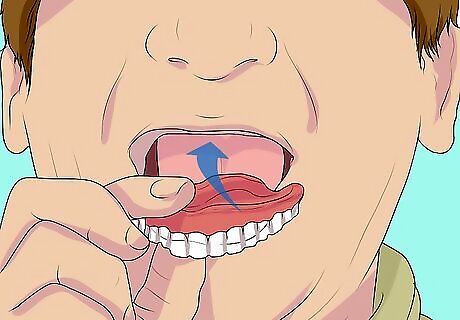
Place your dentures in your mouth. Use your thumb and forefinger to press the upper and lower dentures into your mouth. Powder adhesives may not make your dentures stay in your mouth as long as paste adhesives. Usually, adhesives are more effective on your upper dentures than on your lower dentures. Liquids and foods can loosen your lower denture, so you may want to consider using a paste adhesive for your lower denture.
Removing Your Dentures and the Denture Adhesive
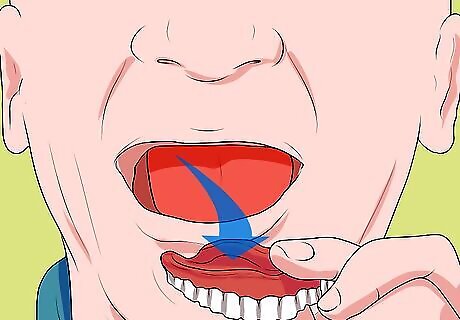
Take out your dentures if you feel any discomfort or there is excessive adhesive in your mouth. If you feel any pain, tingling, or soreness when you put your dentures in your mouth, or if there is too much adhesive on your dentures, you may need to remove them. You can then try to use the paste adhesive again, or try a different type of adhesive. You will also need to remove your dentures at night before going to bed. You should clean your dentures well and place them in a container with water or a commercial denture cleanser.
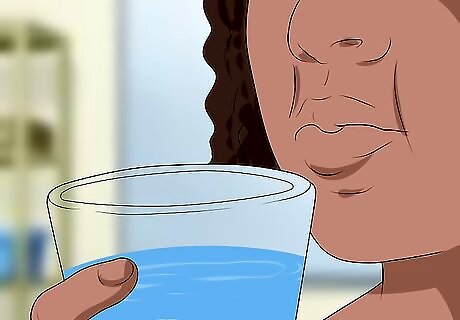
Rinse your mouth with warm water or mouthwash. Before you remove your dentures, you need to moisten your mouth and remove any food debris from the day.
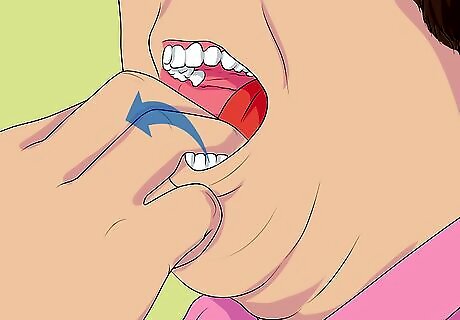
Take out your lower denture first. Pull gently at your lower denture and move it back and forth in a rocking motion. It should slowly release from your gums.
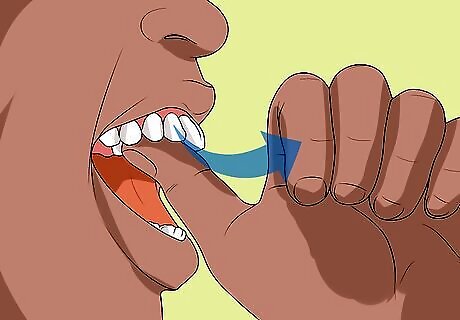
Remove your upper denture. It may be more difficult to remove your upper denture, as there is a higher surface area for the denture to adhere to. Use your thumb to press against the front teeth. Then, press upward and outward with your thumb towards your nose. Your upper denture should dislodge and come out in your hand. You can also grab it on the lateral sides and go as deep as possible with your index fingers, then pull it down vertically. Do not use any other objects besides your fingers and fingernails to remove your dentures as this could lead to injury. If you cannot get your dentures out and you do not want to sleep with them in or keep them in overnight, you may need to seek medical care at the nearest hospital or clinic. You can also contact a 24-hour dental service for assistance.
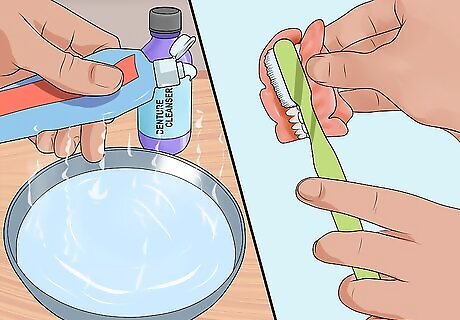
Clean the adhesive residue from your dentures and your mouth. Don’t leave the adhesive residue on your dentures at the end of the day, as your dentures may not adhere properly the following day when you try to put them in. Use your denture cleanser to clean your dentures. Then, combine hot water and toothpaste in a bowl. Use a soft bristled toothbrush to remove the adhesive residue from your dentures. You should also use the toothbrush to clean any adhesive residue from your gums, your tongue, and your mouth.




















Comments
0 comment